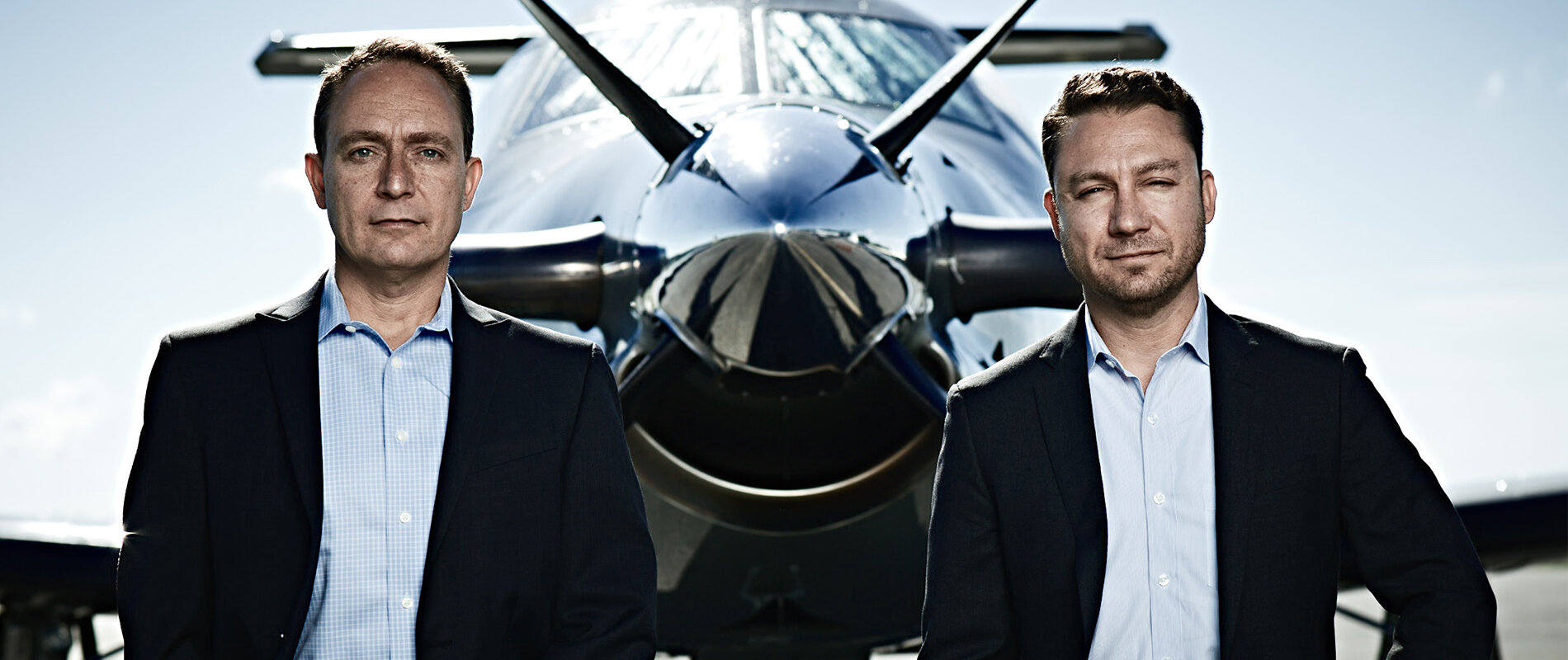My brother David and I got into flying because our father was a private pilot. We got into private aviation because he was a successful entrepreneur. A consumer products manufacturer when home improvement got hot, our father was always looking to improve on things – in business and in the air. We carried that with us into Tradewind Aviation.
A Passion Emerges
Growing up, I was at the Danbury Airport in Connecticut all the time. It wasn’t long before I could call myself a “propeller head”. While Dad flew his Cessna, David and I trained to become pilots. I poked around the airport looking for something interesting to do.
My pursuit ended with an entry-level job answering the phone for an air charter company. The business was strictly mom-and-pop, flying clients to Nantucket in flivvers. That is, small planes with a single pilot and no service to speak of. The customers were captains of industry more accustomed to going coast-to-coast in posh Gulfstream. However, they went along because there were no alternatives for such short flights at the time.
As I moved up in the company and learned the inner workings of the air charter business, it dawned on me that customers would pay for a better flight experience. Improving that experience became a defining principle for Tradewind Aviation. Never mind flivvers: When David and I launched in 2001, we began building a fleet. Starting with Cessna Grand Caravans, we grew to a fleet of turboprop Pilatus PC12s and light jet Citation CJ3s. With these aircraft, we could carry more passengers as well as two pilots. This remains a key to the attentive service we provide. At the start of Tradewind, I was often one of the pilots on the line. Occasionally, I still am.
The Pursuit of Private Aviation
Airline executives who are pilots are few and far between. I like to think that being a pilot gives me a perspective on private aviation and the all-important customer experience that other executives lack.
For one thing, my comfort in the cockpit enables me to more effectively and accurately support the pilots who fly the Tradewind fleet, and that, in turn, guides them in supporting our clients. Indeed, personability with passengers is one of the qualities we hire for. After all, unlike in commercial or luxury jet aviation, private aviation pilots in are only a few feet removed from the passengers in all of our aircraft.
Similarly, our pilots have had a huge part in developing Tradewind’s customer service standards. They are curbside and the first point of contact when clients arrive at the terminal, and they’re on hand to assist with luggage, hand out snacks, discuss details of the flight, and reassure anyone who asks about Tradewind’s flawless safety record – and many do. Though it may seem small, that kind of service adds up.
We also encourage pilots to look for ways to help clients understand that both our planes and our organization are going to provide them with a safe, reliable experience. Though less than 5% of passengers express concerns about safety, we can’t just assume they all know. Again, having two pilots on every flight is key, enabling us to scale to ensure that all of our crew follows the same procedures, the better to communicate our record.
Reflections
In the same vein, I believe the pandemic taught pilots that safety is a much broader concept than getting a plane safely off and back on the ground again. In my mind, it crystalized the importance of being able to articulate to customers the various procedures we take to eliminate the risks of aviation, and how dedicated we are to putting health and safety first. We didn’t always think about general health until the pandemic. Now we do.
I still fly Tradewind shuttle routes a couple times each month, and I regularly participate in all aspects of our pilot training program including the “check rides” and “initial operating experiences” that are required for new pilots by the Federal Aviation Administration. I’m also approved by the French Civil Aviation Authority for training our pilots to fly in and out of St. Barths, which has its own unique challenges that our Pilatus PC12s are designed to handle.
Oh, and David? He’s a purely recreational pilot these days with his own amphibious seaplane, a Aviat Husky that he keeps on a lake at his home in Connecticut and often flies to one of our Tradewind bases at Westchester Country Airport. I used to teach people to fly seaplanes, so I know the thrill he gets from being able to land anywhere there’s water.

